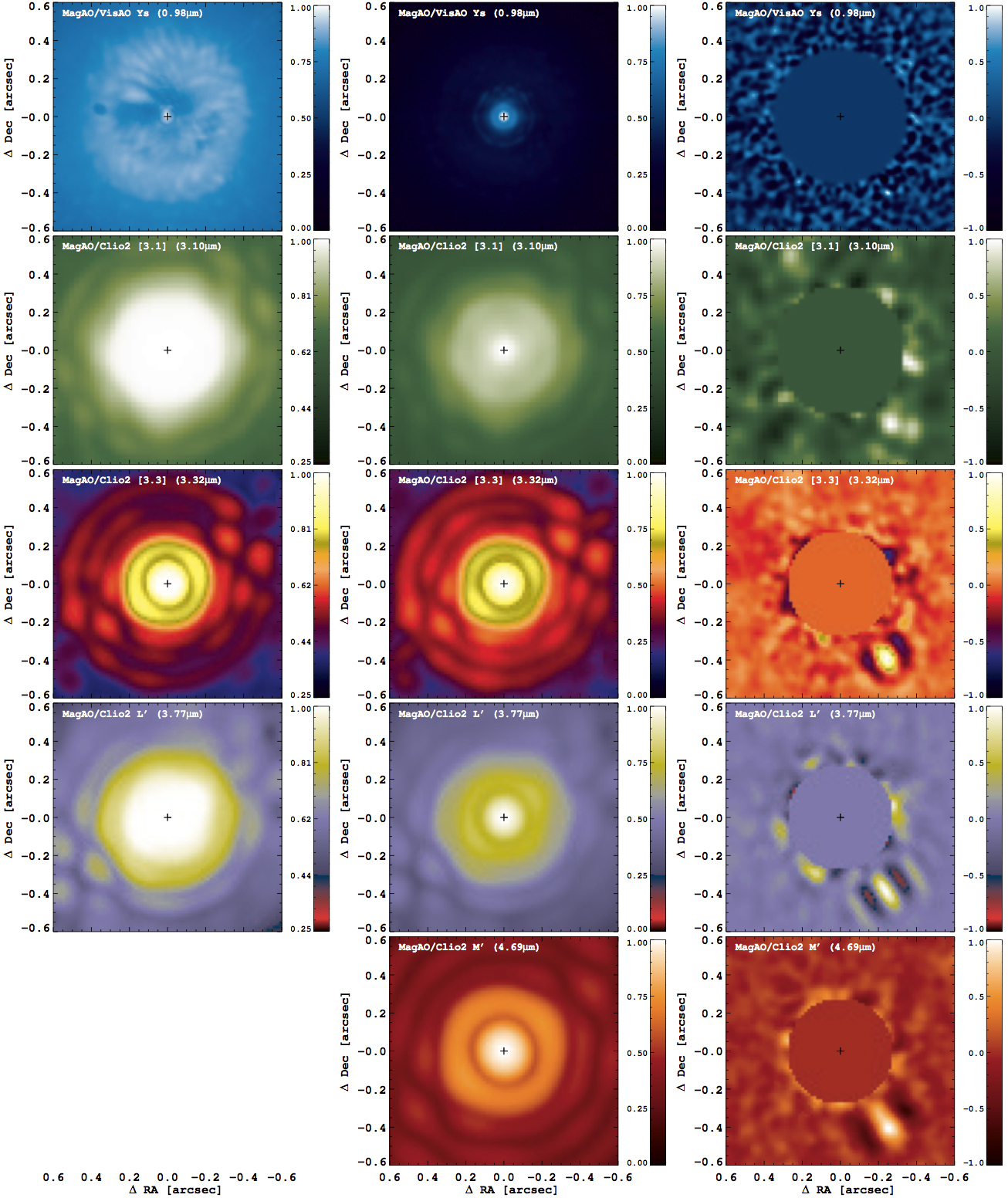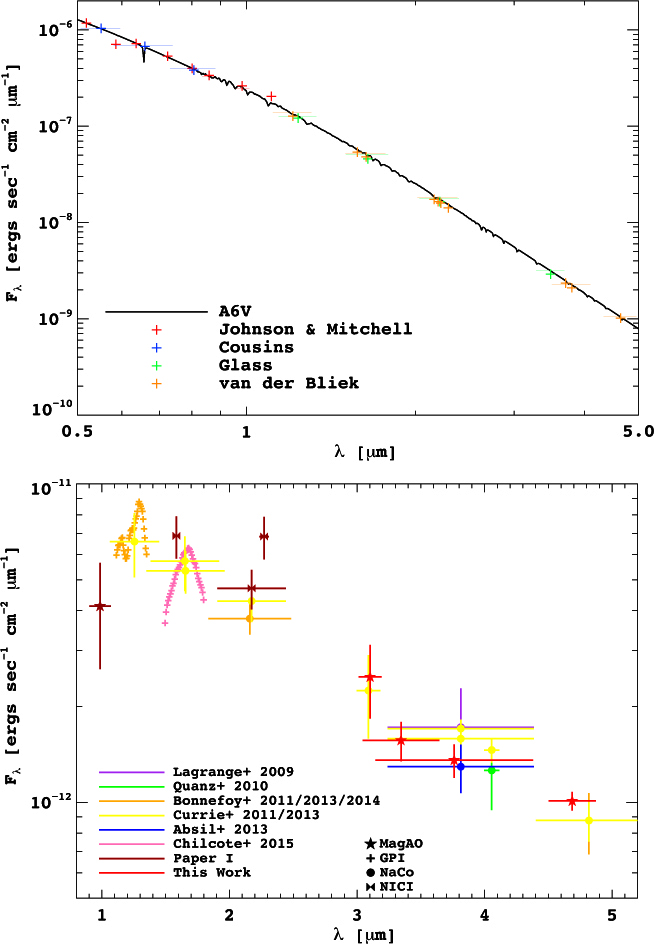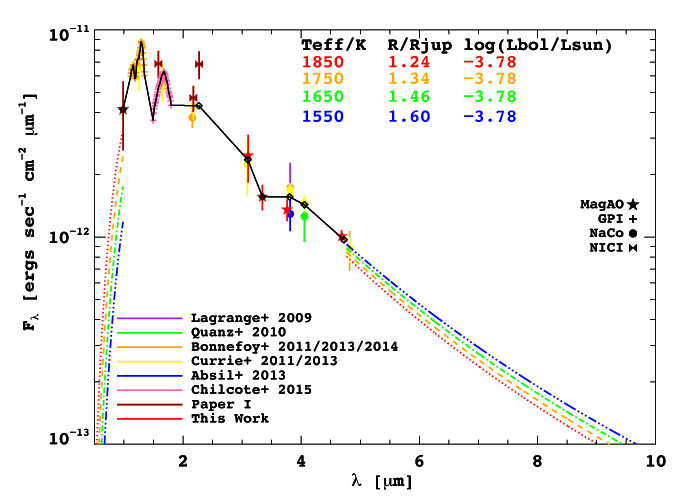I am happy to announce the acceptance of Magellan Adaptive Optics first-light observations of the exoplanet beta Pic b. Paper II by the Astrophysical Journal. This paper presents the 0.9-5 micron spectral energy distribution (SED) of young giant exoplanet beta Pic b. We carefully calibrated Clio (see the Appendix), analyzed our photometry, combined it with other works’ photometry, and measured the total brightness of the planet at all wavelengths — the bolometric luminosity. Here are the images of the star and planet:

Here is the star’s SED and the planet’s SED:

Bottom: SED of the planet (Figure 3 from the paper).
We measured the bolometric luminosity empirically by integrating the SED and extending with a best-fit blackbody:

This is the first time the luminosity has been measured empirically, and it is in agreement with the luminosity from models but about 20% brighter than brown dwarfs of a similar temperature (the bolometric correction, abbreviated B.C. in the table):

Abstract: Young giant exoplanets are a unique laboratory for understanding cool, low-gravity atmospheres. A quintessential example is the massive extrasolar planet beta Pic b, which is 9 AU from and embedded in the debris disk of the young nearby A6V star beta Pictoris. We observed the system with first light of the Magellan Adaptive Optics (MagAO) system. In Paper I we presented the first CCD detection of this planet with MagAO+VisAO. Here we present four MagAO+Clio images of beta Pic b at 3.1 um, 3.3 um, L’, and M’, including the first observation in the fundamental CH_4 band. To remove systematic errors from the spectral energy distribution (SED), we re-calibrate the literature photometry and combine it with our own data, for a total of 22 independent measurements at 16 passbands from 0.99-4.8 um. Atmosphere models demonstrate the planet is cloudy but are degenerate in effective temperature and radius. The measured SED now covers > 80% of the planet’s energy, so we approach the bolometric luminosity empirically. We calculate the luminosity by extending the measured SED with a blackbody and integrating to find log(L_{bol}/L_{Sun}) = -3.78 +- 0.03. From our bolometric luminosity and an age of 23 +- 3 Myr, hot-start evolutionary tracks give a mass of 12.7 +- 0.3 M_{Jup}, radius of 1.45 +- 0.02 R_{Jup}, and T_{eff} of 1708 +- 23 K (model-dependent errors not included). Our empirically-determined luminosity is in agreement with values from atmospheric models (typically -3.8 dex), but brighter than values from the field-dwarf bolometric correction (typically -3.9 dex), illustrating the limitations in comparing young exoplanets to old brown dwarfs.
K. Morzinski et al., “Magellan Adaptive Optics first-light observations of the exoplanet beta Pic b. II. 3-5 micron direct imaging with MagAO+Clio, and the empirical bolometric luminosity of a self-luminous giant planet”
ApJ 815, 108, 2015 ; ArXiv Preprint ; ApJ